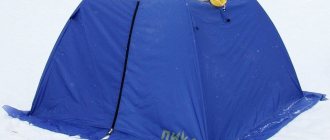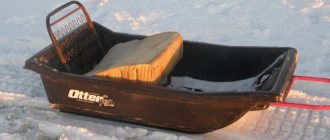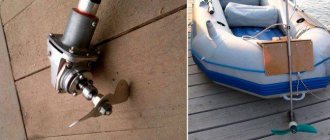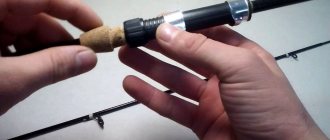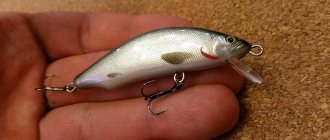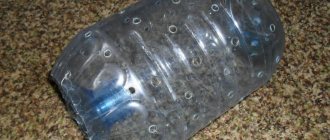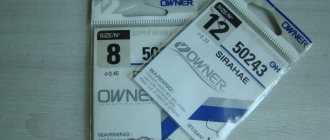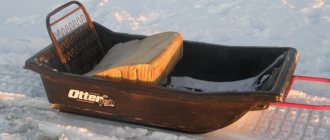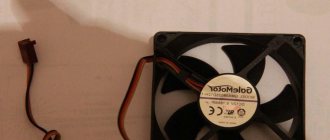Almost all modern boats are equipped with an awning, which provides reliable protection from various negative factors. Moreover, both the boat itself and its passengers need protection. The possibility of independent design cannot be ruled out, especially since this does not require any special skills. But we focus our attention not so much on homemade products, but on one of the types of protection, which is a PVC awning roof for a boat.
Purpose
The first step is to consider the possible types of awnings, since their functionality may vary.
- In one case, it can save passengers from various types of climatic manifestations. A roof awning, for example, is an excellent protection from the scorching sun, but such a device is unlikely to save from the gusty sun.
- In another case, the canopy can reliably protect you from the wind, although sunlight will penetrate into it.
- There are models that are necessary when transporting and storing a boat. They do not allow the passenger to be inside and serve solely to protect the PVC or rubber material.
- Finally, do not forget about tents, in which you can hide, like in a tent, without being exposed to insect bites, not to mention protection from natural disasters.
Classification
Looking ahead, we note that the classification given below is conditional, since many models embody the qualities of several types of awnings at once, and the boat roof we are interested in in the strict sense does not fit into any category at all. However, you should familiarize yourself with the main types of protection, since the proposed terminology is often found in many sources. Even if you start to get acquainted with boat awnings by studying the entire range, it will become clear that models for storage, transportation, movement on water or drifting stand out. Indeed, this is so, only these types are called a little differently.
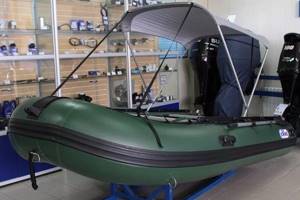
A transport awning is used when transporting a watercraft by car, trailer, or when moving a boat from one place to another. The presence of a kind of cape on the boat implies the absence of passengers in it. It is unlikely that it will be possible to make a universal device out of a transport awning, much less a transformer that allows you to adapt the awning for different purposes. It prevents dust, dirt, and water from entering the cockpit and thereby protects things lying in the boat.
A running awning will ensure a comfortable stay in the boat while it is moving. It can be made in various variations, but most often it resembles a regular tent, attached at the edges to the cylinders of a boat. It is called a running awning due to the presence of transparent windows on the sides and a wind window in the front. Some models use natural glass. It is necessary to understand that the presence of such a device increases the force of air resistance when the craft moves. If the boat has an awning roof installed, then it must be securely fastened, otherwise a gust of wind may cause a lifting force that will simply tear off the awning.
The bow awning is installed at the front of the boat. It does not save the passenger from precipitation, but simply protects from splashes flying into the face, insects, and also from the flow of oncoming wind. You can often find combined models, when the bow cover is integrated with the chassis.
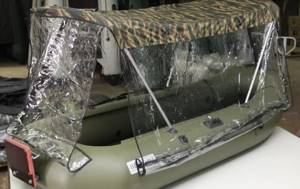
The design of the parking awning is very similar to the transport awning. Their functions are also almost the same. But if the transport one is installed for a short time, then the parking one should protect the boat material from direct sunlight, moisture and dust for several months. With a quality berthing cover, you can even store your boat in an open space.
Frames
The following frame materials are used:
- aluminum tubes;
- steel wires with spring properties;
- fiberglass rods with spring properties.
The shape of the frames is either angular or arc-shaped. The characteristic properties of springing serve to firmly stretch the awning. Aluminum frames are structural, taking into account the insertion of one part into another.
What materials are used
The main material for making awnings is synthetic fabrics based on nylon. For the manufacture of viewing parts - windows, windshields - polyethylene or lavsan is used. However, long-term use affects the quality of the review. Therefore, it is better to use polyvinyl chloride-based film.
On a note! PVC fabric itself is not used in the manufacture of awnings due to its roughness, heaviness and complete lack of air passage.
General information about awnings
Most manufacturers prefer to make the frame from aluminum. The use of this material makes the structure lightweight but quite durable. The awning itself is a fabric impregnated with polyurethane. This fabric is quite durable and waterproof. Its dense weaving does not allow light to pass through, so a shadow is formed in the area under the canopy. Installing a roof awning does not require any special equipment in the boat. The entire structure is quickly installed and does not restrict useful space in the boat.
According to their design, roof awnings are divided into two types.
- The first type is a roof with a frame in the shape of the letter “U”. The frame is considered single, since all its elements are connected into a single whole. Typically, such frames are installed on boats whose length does not exceed 2.8 meters. Y-shaped awnings are installed in rowing boats in which the transom is hinged, that is, movement with a motor is quite possible.
- A two-frame awning rests on two separate posts. Used in boats longer than 2.5 meters. The area of the canvas allows you to cover not only the passenger boarding area, but also the area where the motor is installed.
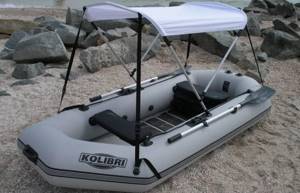
Parking awning
By analogy, it is designed strictly in accordance with the dimensions of the boat. The following materials are used:
- waterproof material;
- masking or adhesive tape;
- fastening buttons or eyelets;
- scissors;
- markers.
Manufacturing and installation:
- Awnings of this type are made taking into account the absence of frame arches. It is necessary to completely cover the boat with awning material;
- After preliminary measuring the required part of the boat, it is necessary to cut out the awning , taking into account the separation of additional dimensions along the edges, for placing fasteners, sewing sleeves, for passing a rubber cord through them;
- In the covering state, measurements are taken on the awning of such auxiliary inserts as pockets, zippers;
- Next, they begin cutting on a machine;
- The finished covering is stretched onto the boat;
- The awning should tightly cover the entire surface of the boat, its lower parts are pulled down along the entire perimeter , and attached with sewn fastening hooks (depending on the side fittings of the boat) to the fittings of the boat.
On a note:
- It is recommended to leave a spare part for measuring up to 20 cm, in case you have to make a tighter edge of the edges of the awning.
- To achieve the accuracy of the pattern, frequent use of tape is recommended for gluing the material.
Note:
- poor-quality tailoring will lead to leakage and water permeability;
- incorrect placement of the eyelets will lead to them falling off and being torn out;
- To prevent accumulation of water on the awning, it is worthwhile to install a stand on the middle inner part of the boat, through which water will flow down the surface of the awning.
Choice
One of the varieties of running awnings is the roof awning. It can be distinguished externally by the absence of side and front walls. Just like a tent, such a device must have a strong but lightweight frame, which is why it is made of aluminum tubes. Before purchasing this accessory, a potential buyer must compare all the pros and cons of the purchase. Indeed, almost every device has disadvantages. Our awning is not without them either.
First of all, you need to determine the intended purpose of the future purchase. If you need a rain awning for a PVC boat, then you should give preference to a tent-shaped structure. Bad weather is accompanied not only by precipitation, but also by gusts of wind. A roof alone will not save you from such natural phenomena. As an alternative option, a transformable awning for the boat is used. Its functionality allows you to effortlessly remove the walls and leave only the canopy.

The roof on light frame pillars is a successful design that protects passengers from the sun. Not only PVC boats, but also small pleasure boats are equipped with such awnings. Folding structures are considered quite convenient. The fact is that high devices, tents or roofs increase the windage of the boat, which significantly limits its speed. The retractable roof can be quickly installed and, if necessary, dismantled.
Where to start making a PVC boat awning
So, let’s say we have our own inflatable PVC boat, what needs to be done to manually make a bow sailing awning?
After a brief preparation for meeting a new experience, it is necessary, first of all, to inflate the existing vessel and carefully inspect it. Here, first of all, a novice tent designer should be interested in the following details: the main overall dimensions of the boat, the shape of the bow of the vessel, as well as the installed fittings.
Next, you will need to develop a detailed plan for the future product, decide on the required material and various fittings. The process of making a model of a future pattern from polyethylene fabric can also bring a lot of benefits, however, first things first.
Advantages and disadvantages
Perhaps some characteristics of the devices will help boat owners make a choice. Having decided on the functionality, carefully analyze all the pros and cons of roof decking.
- The reason for purchasing this type of awning is its low cost. While the cost of expensive transformers can reach 18-19 thousand rubles, an awning roof can be bought for only 4,000 rubles.
- Protection from sunlight allows access to fresh air. There is no need to arrange additional ventilation. A roof can also save you from rain if it is not accompanied by gusts of wind.
- The small weight of the structure makes it easy to carry the awning when disassembled, and also has virtually no effect on the speed capabilities of the boat.
- Some models allow for full-fledged fishing. The absence of side walls makes it possible to cast fishing rods and spinning rods. Hunters will be able to shoot game with a gun.
- Along with the low weight, it is worth noting the compactness of the equipment, which fits into a special bag.
- Finally, an important advantage of a roof awning is the ability to make it yourself. It should be noted not only the simplicity of the design, but also the low financial costs for materials.

It often happens that some seemingly positive qualities are accompanied by the appearance of some shortcomings. They must be taken into account, otherwise you may end up with a completely useless device.
- The absence of side walls, as already mentioned, does not protect against insects and strong winds.
- The high sail of a boat with an awning roof limits the speed of movement across the pond.
- Despite the possibility of fishing, users note in their reviews that the canopy does not provide the opportunity to fully cast a fishing rod.
Homemade option
There cannot be detailed instructions for making a canopy with your own hands, since the main idea, drawings and dimensions depend on the dimensions of the boat, as well as the imagination of the craftsman. There are only a few useful tips that you should arm yourself with. You can start work by installing the frame. If you want to save money, the material for the frame is taken from an old folding bed. If telescopic tubes are beyond your means, then use a connection with regular bolts.
A two-frame canopy is easier to make. To do this, two racks are made in the shape of the letter “P”, which are connected at the top with ties. The awning fabric will be attached to the crossbars of the posts. To allow quick assembly and disassembly of the canopy, the awning should be secured with straps. the need to install additional elements depends on the distance between the frames. You will have to buy accessories, since some elements must be glued to the boat cylinders.
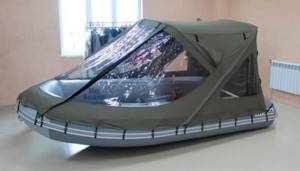
If the frame can be considered ready, then the awning must be cut out correctly. In addition to straps, there are other ways to attach the awning to the frame. Often, rings are sewn around the perimeter of the fabric. The twine, threaded through such rings, intertwined with aluminum tubes, will securely hold the awning on the device. If desired, the awning can be equipped with additional accessories, including zippers and pockets. They will have to be sewn in using a sewing machine. This will require a certain skill, which it is advisable to obtain in advance.
A pattern previously prepared on a sheet of paper will help you avoid mistakes. Layouts of the finished pattern can be found on the Internet, as many boat owners are happy to share their experience.
A necessary condition for long-term operation is proper care of the awning. It must be washed and dried after the hike. The material should not be stored outdoors, as constant exposure to sunlight can damage the PVC surface. Please note that in conditions of high humidity the material will have to be dried periodically.
How to make a walking awning
The organizational stages of manufacturing this type are similar to the bow one: we determine the dimensions of the boat, the frame, and make a pattern for the awning using test material.
The following materials will be required:
- a pipe for an arc measuring at least 20 mm (at least 4 m);
- bracket (at least 9 pcs);
- awning fabric (not less than 9 m);
- nylon threads;
- transparent film for window parts;
- fasteners for fastening parts of the awning when folding them (at least 10 pcs);
- buttons for fastening the awning.
Manufacturing and installation:
- To begin with, a frame is made: one pipe will be the carrier (large size), and the second will be mounted on the middle part of the carrier (small size).
- Manufacturing occurs by bending aluminum pipes to obtain the desired shape, taking into account the dimensions of the boat and the expected ceiling height of the future awning.
- Having prepared the desired shape of the arc and retreating at least 20 cm from the base of the tube , a device - a clamp, with holes for bolts - is placed in the middle of the supporting frame.
- The small frame is equipped at the ends with a fastening device with a coupling to limit its rotation in one direction. With these fasteners, parts of the frame are fixed to each other with bolts. Here you need to take into account that the limiter in the fastener is located on the outside of the small frame, from the supporting one.
- Having previously installed the frame on the desired part of the boat , marks are made to place the fastening spots.
- The parts of the boat where the marks were made are cleaned and covered with glue. In the same way, the patches are covered and glued.
- The upper edges of the frames must be equipped with clamps-rails , into which rubber shock-absorber belts will be attached, equipped with hooks that will be attached to the front and rear parts of the boat cylinder in fastening fittings.
- After installing and fixing the frames in a vertical position, as a rule, the entire structure of the running awning will be placed on them. After manufacturing and installing the frame, you will need to cut out the elements of the awning. They consist of several parts, including transparent oilcloth parts for front and side viewing.
- In manufacturing and cutting, the lower parts of the side and front elements must have a spare length of up to 20 cm, where they will be folded to the inside, thereby forming a passage for the rope. The folded part must be equipped with holes for eyelets with a distance of up to 15 cm.
- The side, viewing and overlapping parts of the awning must be stitched with zippers from the inside in order to combine with other elements of the awning and the frame.
- At the end parts of the awning, where the zippers are sewn, it is necessary to attach push-button attachments to tightly fix the parts of the awning and prevent the zippers from opening when exposed to wind.
- After making and cutting the awning, the first step is to attach the ceiling part of the awning to the frame arches. The top of the awning is stitched with three zippers. One zipper is sewn on the inside, one on the edge of the awning and one on the outer middle part between the inner and outer zippers. Here you need to take into account how the zipper wraps around the upper arc of the frame.
- The awning is pulled onto the frame by attaching the outer and inner zippers to each other, taking into account the coverage of the frame arc.
- An external zipper is used to secure the viewing and side parts together.
On a note:
- Arches must be made in two sizes. Small arc for the front of the boat, large arc for the middle of the boat.
- When in use, the awning must be in a well-tensioned state. To do this, shock absorber cords are placed at the edges of the side and rear parts of the boat. At the ends of the cords there should be hooks attached to the eyes and lugs.
- Next, having installed all the elements of the awning, you need to pass the rope along its lower part , where a passage is sewn for the rope, through which it will be attached to the side fittings of the boat cylinder.
Note:
- Particular importance is attached to the possibility of folding the awning , by pulling it in the viewing part of the boat and jumping off the eyelets from the mounting screws, this ensures the adoption of prompt actions in appropriate situations;
- When forming the side viewing parts, choosing denser materials , you need to make them in small sizes, or assemble them from parts with a hinge, for convenient folding.


